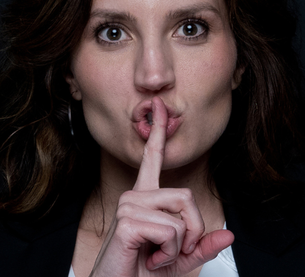The Performance Management King
I recently picked up the very brilliant The Illusion of Life by Frank Thomas and Ollie Johnson. For those of you who don’t know, it’s a colourful investigation into the origins of our favourite Disney characters. Written by two of the nine animators who made Walt Disney into a household name, it very aptly demonstrates what a visionary Disney was – and not just in the field of animation.
Way back in 1923, when performance appraisals, 360 feedback, and employee evaluations weren’t established (and certainly weren’t Googleable), this guy was blazing a performance management trail that leaves many modern businesses in the dust. It’s an approach that took his fledgling studio from two employees to over 1000 in only sixteen years¹. Let’s take a look at exactly how he did it.
1. Alignment
“Of all the things I’ve done, the most vital is coordinating those who work with me and aiming their efforts at a certain goal.”
– Walt Disney
Over the last 20 years, we’ve seen a huge amount of research published on the topic of employee alignment. We now know that employees who are aligned with organisational goals and objectives have higher engagement and job satisfaction, while their employers enjoy significant advantages over competitors². Disney was way ahead of us, using three key practices to actively aligning his workers:
Leading by Example
Disney had a firm creative vision, and he made sure his animators shared it. In story meetings he would act out the scenes, demonstrating the gestures and attitudes he wanted to see in the final cartoon. It’s a philosophy the Disney Company maintain today, and leaders are expected to behave according to their values and vision, which must align with organisational values³.
Team Effort and Ownership
‘Everyone has to contribute, or they become laborers.”
– Walt Disney
Disney believed that each person connected to a film had to feel that they were vital to its success. As such, he involved everyone in the collaboration and evaluation process throughout production.
Engagement
To get his team excited about an upcoming production, Disney would bring in a well-known artist to create unique drawings or paintings long before any actual story work began.
2. Transparency and Collaboration
When animation was in its infancy, skills gaps were commonplace. Studios did not share techniques, and it was difficult for beginners to learn the skills and tricks other animators had already discovered, even within their own studios.
Disney turned this model on its head. He insisted on an open atmosphere and encouraged each artist to share their views and discoveries. The studio effectively created a mentoring program which, by pooling insight from newbies and experienced professionals, allowed Disney animators to remain at the cutting-edge of their field.
Believing that good ideas came from everyone⁴, Disney did away with the concept of seniority. All the animators worked together in one large room to encourage discussions and problem solving. It wasn’t until 2012 that knowledge management (the process of transforming individual knowledge into organisational knowledge) was proven to contribute positively to organisational performance. At the same time, we also discovered that a collaborative culture enhances the benefits of knowledge management⁵, something Walt Disney had recognised nearly nine decades before.
3. Recognition
With the power to increase engagement, encourage development, enhance alignment and reduce turnover, recognition is critical to talent management (check out my article on recognition programs for a re-cap). Disney knew this only too well and made sure to praise great work – calling everyone together to discuss a drawing he particularly liked.
Recognition still plays a pivotal role at The Disney Company – Florida’s Walt Disney World alone boasts 180 different employee recognition programs. One of the most coveted at the park is the Spirit of Fred Award. Named for a long-term employee who made his way up the ranks by exemplifying Disney values, Fred makes the awards himself, which include The Lifetime Fred Award and the annual Spirit of Fred Awards⁶.
4. Frequent Feedback and Training
Quality was everything to Disney, but so was skill. If an animation was clumsy or poorly staged, he wouldn’t delegate the work to an animator with more proficiency. Instead, he would pair the original artist with a more experienced teammate to provide guidance.
Despite this focus on mentoring and on-the-job training, by the 1960s, Disney’s studio was suffering from a skills gap. His original nine animators – trained in 1929 at the Chouinard Institute – were starting to retire, and those coming up lacked the technical expertise to take their place. He needed a new approach to training, and his long-term association with Chouinard provided it.
Disney’s vision for a specialist college led to the incorporation of CalArts (a merger between Chouinard and the Los Angeles Conservatory of Music) in 1961. There, students studied animation under the tutelage of his nine retired animators, and the company cherry-picked the best graduates⁷. It’s an approach we see more and more of in China and India, where companies sponsor existing colleges or create their own to guarantee the graduates and skill sets they need⁸.
To Sum Up…
One word crops up over and over again when investigating The Disney Company’s people management processes; genuine. Disney genuinely cared about his business, his worker, and his product. His understanding of alignment and company values ensure his attitudes to training, recognition, and collaboration are still at the heart of the company today.
– John Windust
from Cognology




